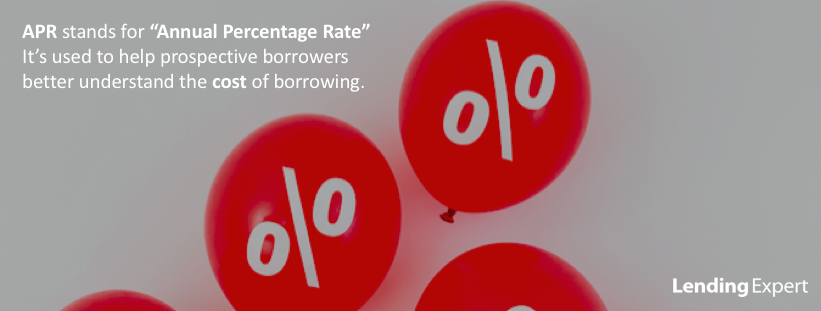If you’ve looked for a loan before, you’ll have come across the term ‘APR’, this being used for loans, mortgages, car finance and credit cards.
The APR on products can help prospective borrowers find and compare the right personal loans for them. But what exactly is APR? What does it stand for? And how does it work? Here, Lending Expert explores answers to all these questions and more.
What Does APR Stand For?
APR stands for “Annual Percentage Rate”, and is used to help prospective borrowers understand what the actual cost of their borrowing for the year could be with certain financial products.
Put simply, the APR will refer to the total, annual cost of a loan, taking into account the interest and standard fees a borrower will have to pay. It’s a representation of the cost of borrowing for a year.
The APR helps you to understand the cost of borrowing loans, taking into account a loan’s additional charges as well as its interest rate. It’s important to understand what the APR is before taking out any type of loan product, and all lenders are required to tell customers what the APR will be for their loan before they sign a borrowing agreement.
By understanding the APR, you help yourself to understand the true cost of borrowing a loan, and empower yourself to make a fairer, more accurate comparison of the different financial products available to you.

How Does APR Work?
APR helps prospective borrowers to compare loans and other types of financial products. With loans, providers will calculate their interest in various different ways, either daily, weekly, monthly or annually. This can make it hard for customers to find the best option for them, however, thankfully lenders have to tell their prospective borrowers what the APR for the loan is so that they can get a better picture of borrowing such a product.
It’s important to note that the APR of a loan product will only include the compulsory charges, meaning certain fees you may get (e.g. late payments) will not be represented in the APR.
Representative APR vs Personal APR
When looking around at loan products, you may have come across the phrase “Representative APR”. It’s important to note that this figure, as the name suggest, is only a representative of the APR that could be applied to a loan you take out. It is the advertised rate, and depending upon your eligibility, may not apply to your personal loan deal with a lender.
The Representative APR, while an advertised rate, applies to a minimum 51% of successful applicants accepted for the credit deal. Those not eligible for this rate will be offered a different APR.
A personal APR is the actual rate a borrower is offered for a loan deal. Depending on the borrower’s eligibility, this APR could be the Representative APR, or it could be another rate. Lenders base the rate borrowers are given on various different details.
What Can Affect the APR?
The APR you’re offered for a loan can vary depending certain financial details, including the following:
- The amount you’re wanting to borrow
- How long you’d like to borrow this for
- Your credit score
Usually, those offered lower rates will have a better credit score, while those offered higher rates will have a poorer credit score.
When evaluating loan applications, lenders will be looking to assess prospective borrowers’ affordability. Therefore it’s important with any loan application that you can demonstrate you are able to afford the loan and keep up with repayments by meeting their eligibility criteria.






